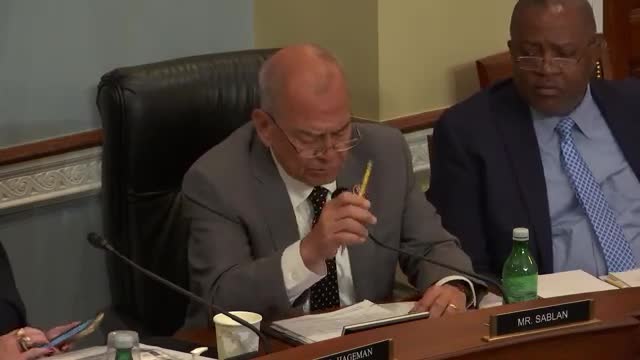Guam faces data collection crisis amid federal challenges
June 14, 2024 | Natural Resources: House Committee, Standing Committees - House & Senate, Congressional Hearings Compilation

This article was created by AI summarizing key points discussed. AI makes mistakes, so for full details and context, please refer to the video of the full meeting. Please report any errors so we can fix them. Report an error »

In a recent government meeting, officials discussed the ongoing challenges of data collection in U.S. territories, particularly Guam. The conversation highlighted the complexities of sampling populations and the associated costs, emphasizing that while the sample size for Guam and Kentucky may be the same—38,000 individuals—the cost per capita for data collection is significantly higher in smaller populations like Guam. This discrepancy arises because a larger percentage of a smaller population must be sampled to achieve the same level of precision, leading to increased costs per person.
Officials acknowledged that despite these challenges, data collection should not be sidelined. They pointed out that many agencies currently opt for smaller samples, resulting in less precise data. The meeting also addressed the reliance on federal technical assistance, which has proven insufficient for addressing data deficiencies in the territories. A report from the Government Accountability Office (GAO) indicated that nearly $62 million in technical assistance funds had been allocated to the territories from 2019 to 2023, but only a fraction—between $1 to $2 million—was directed toward improving data collection efforts.
The discussion underscored the need for better coordination between federal agencies and the government of Guam to ensure compliance with data collection standards. Guam's officials stressed the importance of clear communication and collaboration to enhance the accuracy of data transmitted to federal agencies. The meeting concluded with a call for increased advocacy and action to address the longstanding data collection issues that hinder the territories' ability to access necessary resources and funding.
Officials acknowledged that despite these challenges, data collection should not be sidelined. They pointed out that many agencies currently opt for smaller samples, resulting in less precise data. The meeting also addressed the reliance on federal technical assistance, which has proven insufficient for addressing data deficiencies in the territories. A report from the Government Accountability Office (GAO) indicated that nearly $62 million in technical assistance funds had been allocated to the territories from 2019 to 2023, but only a fraction—between $1 to $2 million—was directed toward improving data collection efforts.
The discussion underscored the need for better coordination between federal agencies and the government of Guam to ensure compliance with data collection standards. Guam's officials stressed the importance of clear communication and collaboration to enhance the accuracy of data transmitted to federal agencies. The meeting concluded with a call for increased advocacy and action to address the longstanding data collection issues that hinder the territories' ability to access necessary resources and funding.
View full meeting
This article is based on a recent meeting—watch the full video and explore the complete transcript for deeper insights into the discussion.
View full meeting